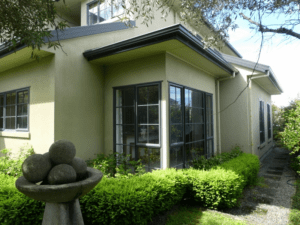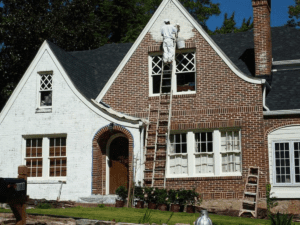
Photo bymathias173onPixabay
House painting is a key aspect of home maintenance that not only adds aesthetic appeal but also protects it from harsh weather conditions. While small-scale painting projects can be managed easily, painting the exterior of your house, especially if it’s a two-story building or taller, can pose significant challenges. Among these challenges, the most prominent one is ensuring safety while working at heights. This is where scaffolding comes into play. This article will guide you through the various aspects of using scaffolding for a house painting project in Auckland.
What is Scaffolding?
Scaffolding is a temporary structure used to provide support and elevated work platforms for workers during construction, maintenance, or repair projects. It is typically composed of metal poles and wooden planks that are interconnected to form a stable and safe platform for workers to stand and move around while they work.
Why Use Scaffolding for House Painting?
Safety is the prime reason to use scaffolding for house painting. Painting a house involves reaching high walls, corners, and ceilings, which can be hazardous if not done correctly. Scaffolding provides a stable platform for painters to safely and comfortably reach these areas. It also offers a wider working area compared to ladders, allowing painters to move freely and access larger sections of the house without having to constantly climb up and down.
Types of Scaffolding for House Painting
There are several types of scaffolding systems available, each designed to cater to different project requirements. The most common ones used for residential painting projects include:
1. Frame Scaffolding
Frame scaffolding is one of the most common types of scaffolding systems used in residential painting projects. It consists of a framework of steel or aluminium tubes arranged in a rectangular shape. They are easy to assemble and disassemble, making them ideal for short-term painting projects.
2. Mobile Scaffolding
Mobile scaffolding, also known as rolling scaffolding, is a type of scaffolding mounted on casters or wheels. It allows for easy movement from one location to another, making it highly suitable for painting large surface areas.
3. Suspended Scaffolding
Suspended scaffolding is a type of scaffolding system that is suspended from the roof of a building using ropes or chains. It is commonly used for exterior painting projects where accessing the walls from the ground level is challenging.
Do You Need a Permit for Scaffolding in Auckland?
In Auckland, you may need a permit to install scaffolding, especially if it will be erected on public property or obstruct pedestrian pathways. It’s always a good idea to check with your local council or a professional scaffolding company to understand the specific regulations and requirements in your area.
Cost of Hiring Scaffolding in Auckland
The cost of hiring scaffolding in Auckland can vary significantly depending on the size and complexity of your painting project. Factors like the height of the building, duration of the project, and type of scaffolding system required can all influence the overall cost. On average, you can expect to pay between $650 to $1100 per week for scaffolding hire in Auckland.
Scaffolding Safety Tips for House Painting
Safety should be your top priority when using scaffolding for house painting. Here are some safety tips to follow:
- Always ensure that the scaffolding is erected, altered, and dismantled by a competent person who has been trained and has sufficient experience with the type of scaffolding being used.
- Regularly inspect the scaffolding to ensure it remains in a safe and stable condition.
- Never exceed the safe working load of the scaffolding.
- Use appropriate personal protective equipment (PPE) such as safety helmets, gloves, and safety shoes when working on scaffolding.
- Always lock the wheels of mobile scaffolding before climbing up to work.
Conclusion
Scaffolding can be a valuable tool for house painting projects in Auckland, providing a safe and stable platform for painters to work at heights. However, it’s important to consider the cost, permit requirements, and safety aspects before deciding to use scaffolding for your project. Always consult with a professional scaffolding company to ensure that you choose the right scaffolding system for your specific painting project.
Contact Us
For more advice on using scaffolding for house painting, feel free to contact us. Our team of scaffolding specialists in Auckland is ready to assist you with all your scaffolding needs.
The information provided in this article is intended for general guidance only and is not a substitute for professional advice. Always consult with a professional scaffolding company before undertaking a house painting project that requires scaffolding.



